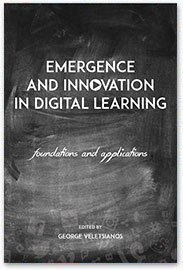What do scholars share on social media? Like the jelly jars below, some topics shared/discussed are familiar. The center jelly nn the top row? I’ve seen many of those. A scholar sharing a link to a paper? I’ve seen many of those, too. Other jellies, and scholarly activities online, are more complex and require a closer look. The bottom right jelly? I’m not quite sure what to make of it. Some scholars disclose challenging professional and personal issues on social media. That’s what Bonnie Stewart and I set out to understand in a our paper Discreet Openness: Scholars’ Selective and Intentional Self-Disclosures Online. Popular literature tends to offer conflicting advice on this topic. Scholars are encouraged to share both personal and professional aspects of their self online, but at the same time they are advised to “watch what they say.” The empirical literature examining scholars’ online self-disclosures and the reasons for making these disclosures remains limited.

DGJ_5184 – Jelly Jars by Dennis Jarvis
Research into emergent forms of scholarship focuses on academics’ use of technology for learning, teaching, and research. Very little attention has been paid in the literature to scholars’ uses of social media to disclose challenging personal and professional issues. This article addresses the identified gap in the literature and presents a qualitative investigation into the types of disclosures that 16 scholars made online and their reasons for doing so. Results identify wide-ranging personal and professional disclosures. Participants disclosed not only about academia-related issues but also about challenges pertaining to family, mental health, physical health, identity, and relationships. Some scholars disclosed as a way to grapple with challenges they faced; others disclosed tactically, sharing information for political rather than personal reasons. Yet others disclosed as a way to welcome care in their lives. In all instances, though, disclosures were selective, intentional, and approached with foresight.
Unlike popular literature that suggests that scholars are “naive users of social media” and must exercise caution, our research shows that people might be thinking deeply about the the ways that the share aspects of their lives.
You can retrieve the paper from here:
Veletsianos, G. & Stewart, B. (2016). Scholars’ open practices: Selective and intentional self-disclosures and the reasons behind them. Social Media + Society, 2(3). doi: 10.1177/2056305116664222

 Athabasca University Press has just published
Athabasca University Press has just published